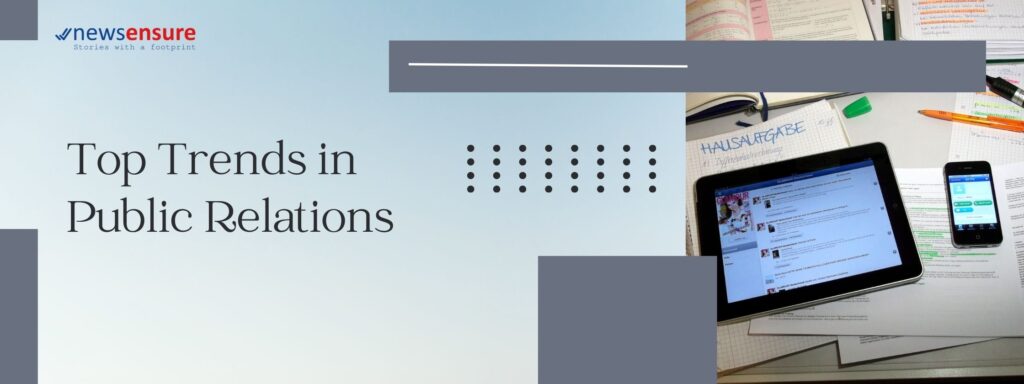Technological advancements coupled with pronounced changes in consumer behavior and the media landscape have transformed public relations in recent years, elevating its importance and influence in many respects.
By leveraging the following industry trends, PR professionals can remain relevant and reap the maximum ROI from their campaigns.
It is important to remember that these insights do not supplant the basic building blocks of successful public relations, including establishing personal relationships with key stakeholders, as well as being well versed in the needs of your target audiences.
Data-Driven Insights:
Gathering and analyzing relevant data is the key to understanding consumer sentiment, tracking media coverage, and measuring campaign effectiveness. The ability to distill data in real time allows PR professionals the flexibility to make informed decisions and adjust their messages for maximum impact.
Personalization and Customization:
With the rise of social media and targeted marketing, personalization has become paramount. PR campaigns are increasingly tailored to specific audiences, ensuring that messages resonate on a personal level. Customization not only enhances engagement but also fosters meaningful connections between brands and consumers. The ability to address messages to relevant recipients represents a huge advantage over the scattershot approach that characterized PR campaigns of years past.
Influencer Engagement:
Influencers have become a driving force in PR, offering authentic connections with niche audiences. The trend of collaborating with influencers is set to expand, with brands focusing on long-term partnerships that align with their values and resonate with their target demographics. There are specialized agencies that help identify appropriate influencers.
Visual Storytelling:
Visual content, including images, videos, and infographics, is gaining prominence in PR strategies. Visual storytelling captures attention and conveys complex information in a more engaging manner. This trend will continue to evolve as virtual and augmented reality technologies become more accessible.
Artificial Intelligence (AI) Integration:
AI is revolutionizing PR by automating tasks such as media monitoring, sentiment analysis, and content generation. Chatbots are enhancing customer interactions, while AI-driven insights assist in guiding PR strategies.
Crisis Management in Real Time:
In the age of social media, crises can escalate rapidly. Effective crisis management requires real-time monitoring, swift responses, and transparency. PR professionals must be prepared to handle crises promptly to mitigate reputational damage. There are several subscription tools available that will provide alerts re-breaking news developments that can potentially negatively impact your organization.
Multichannel Communication:
PR efforts no longer rely solely on traditional media. Multichannel communication encompasses social media, podcasts, webinars, and more. The challenge lies in maintaining a consistent brand voice across diverse platforms while adapting to each channel’s unique requirements.
Remote Work and Digital Collaboration:
The COVID-19 pandemic accelerated the adoption of remote work and digital collaboration tools. PR professionals are embracing virtual environments for brainstorming, strategy development, and media interactions. This trend is likely to persist as hybrid work models gain traction.
Ethical Communication:
As consumers demand transparency and authenticity, ethical communication practices are paramount. PR practitioners must be vigilant in monitoring misinformation and fake news in the marketplace, as well as being cognisant of privacy concerns. Building trust through honest and transparent communication will be a defining factor in successful PR campaigns.
Agility, adaptability, and innovation will be the hallmarks of successful PR practitioners moving forward. The PR industry has undergone a tremendous transformation driven by technological advances and structural shifts in the media landscape. PR professionals need to embrace these new dynamics to harvest the rewards now within their reach: PR’s enhanced ability to influence perceptions, foster connections, and promote meaningful change.
